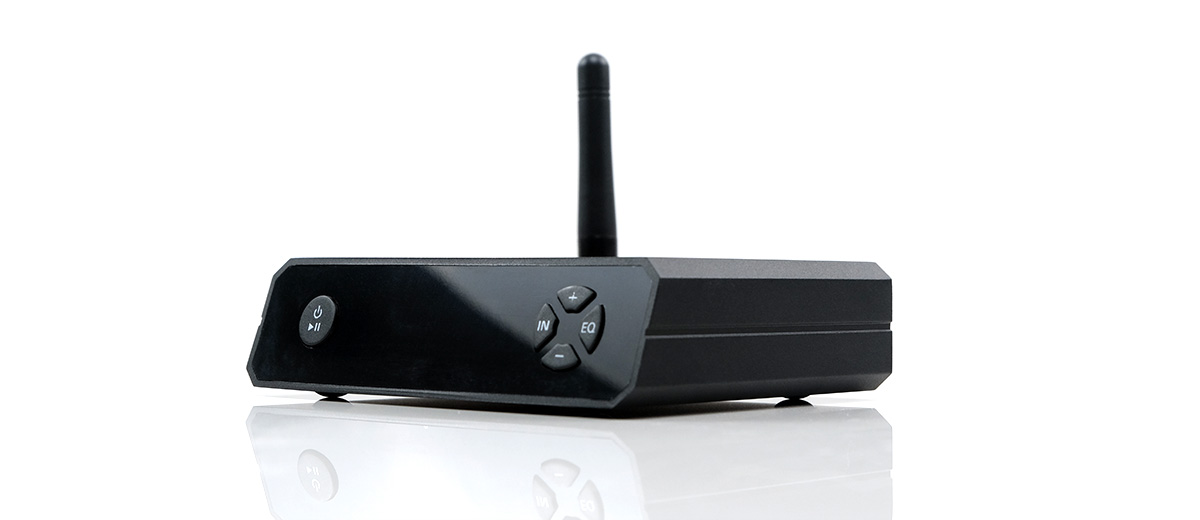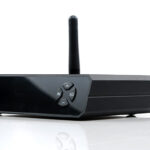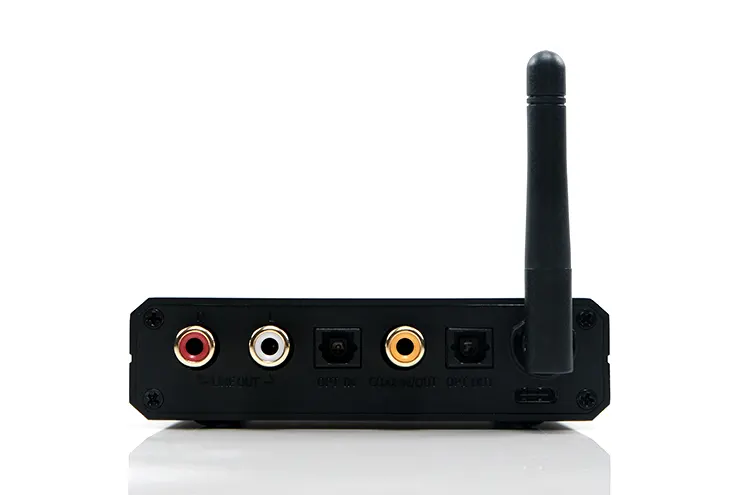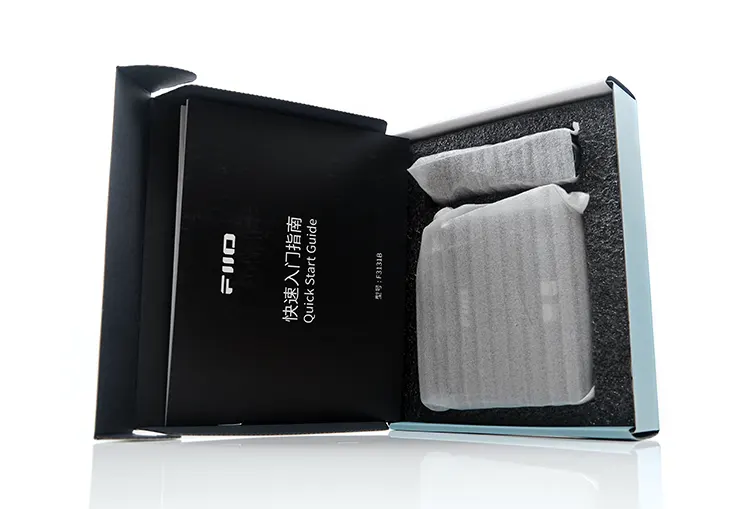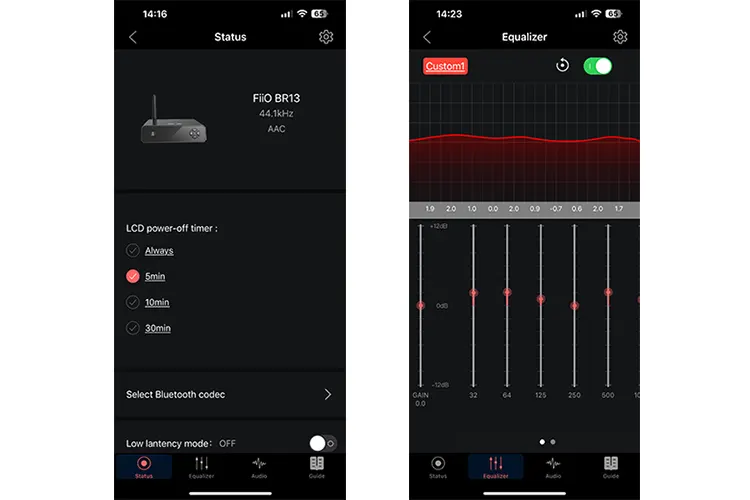In this feature, we review the FiiO BR13, which is a pocket-sized USB-powered desktop Bluetooth receiver capable of up to 24BIT /96k LDAC decoding. It is priced at $59.99.
Disclaimer: This was sent to us as a sample in exchange for our honest opinion. Headfonics is an independent website with no affiliate links or services. We thank FiiO for its support.
You can click here to learn more about the FiiO audio products we have previously assessed on Headfonics.
Note, that this post follows our current scoring guidelines which you can read in more detail here.
The BR13 is FiiO’s budget entry into the desktop Bluetooth streaming receiver market with the BTA30 and BTA30 Pro pitched at a much higher-level audience. Like those two, the BR13 is much more than it might seem on paper.
With the ability to connect across many sources, and with a usable app; the FiiO puts its mettle against other company’s offerings. There are few options at this price point so you could almost consider the BR13 to be in a class alone.
With many EQ options built in, and functionality that belies its place, this might be a good alternative for those who are budget-minded. Read on to find out if that is indeed the case.
Tech Highlights
Using the ES9018K2M DAC and a dedicated 100MHz crystal oscillator, the BR13 also boasts 5 independent LDOs for precise voltage regulation and a dedicated OVP for over-voltage protection.
This last aspect is especially important when switching the unit on and off, and between codecs, which is adjustable.
Design
Small and discreet would be apt descriptors for the BR13. At 98x96x26.5mm and weighing in at only 135g the unit can be easily placed almost anywhere within your systems. Just for reference to how tiny it is the above is a picture of the unit nestled on top of FiiO’s M17 DAP.
The front of the all-black unit has a larger lacquer-finished screen, carrying the LCD screen, on/off, and the four individual smaller buttons for source (IN) equalization (EQ), and volume (+/-). The LCD screen purportedly minimizes the burn-in effect, while staying on. You can alter the time allotted for staying lit, through the app.
The chassis is made from a single piece of polymer plastic, eliminating most “breaks” except for the front and rear panel insertion. The textured finish gives a metallic look to it, exuding a premium feel.
The front panel, which is slightly canted back at the top, allows me to see the unit display with ease since chances are the unit will be mounted lower than eyesight.
I/O
The back carries all of the necessary connections from RCA Line Out, and Optical Output, to Optical Input, Coax in/output, and Bluetooth.
Pretty much any newer powered speaker will have the necessary connectivity options, and home two-channel setups as well. Older units, such as my Denon PMA-770 were easily connected via the RCA Lineout, while the Optical Output was connected to a newer Yamaha amplifier and Klipsch Heritage The Sixes powered speaker.
Using the BR13 as a pre-amplifier follows naturally as well, with the optical connections. I did not utilize the unit in such a manner, focusing on powered speakers and my two-channel setups.
Controls
The front has the on/off button to the left of the screen. Connecting via a USB-C to USB-A cable allows the unit to be controlled either through a wall wart or directly from the unit you connect it to; in my case, I used a wall wart and the Yamaha A-S301’s USB-A connection. When the amplifier came on, the BR13 did as well.
The center stage is the nicely sized LCD screen, which carries all of the necessary information from volume level, source, and EQ setting (if applied). Lighted screen time can be changed in the app between always, 5min, 10min, and 30min.
To the right of the LCD screen are the IN (source), volume (+/-), and EQ (five + two custom on the device, seven + two custom on the app). I appreciated the tactile feel of each button. There was no inference as to whether the button was indeed intending a change, it happened.
Packaging & Accessories
Coming in a smaller box, the diminutive BR13 is packaged and protected well. Inside you find the unit (with a permanently attached and rotatable BT antenna), the power cord (USB-A to USB-C), and an optical cable.
Also included is a multi-language instruction manual for rudimentary help, along with a QR code for downloading the app for your respective Android or iOS device.
Wireless Connectivity
Bluetooth
Qualcomm’s QCC125 BT chip (the same one used in the company’s TOTL R9), supports streaming for 5.1, and LDAC as well as aptX, Adaptive aptX, aptX LL (for gaming), aptX HD, AAC, and SBC.
Versatility rides in this little unit. And, with the TPA1882 op-amp, the BR13 can upsample to 96kHz/24bit output through digital and optical outputs.
Combine all of the tech elements, and you get a noise floor of less than 5uV (A-weighted), an SNR of >113dB, and THD+N of <0.0006% for non-Bluetooth operations, and <0.002% Bluetooth LDAC.
In addition to its decoding and output capabilities, the BR13 can also function as a receiver (arguably its main objective). You can use its versatility to receive SBC/AAC/LDAC signals, for various audio setups such as my two-channel systems used in this test.
Allowing advantageous use for those who stream from their iPads or the phone makes logical sense; since most of today’s consumers stream something using their personal device(s).
Connections to the BR13 stayed strong, not dropping until I hit roughly 20+ meters and two walls before interruptions occurred. This is superb, and I could freely walk about my house with my phone in my pocket, without interruption. BT was used with my iPhone 13 Pro Max to Klipsch The Sixes.
App
Downloading the FiiO Control app was easy, even if the BR13 can be used without it. Using the app, you gain two additional EQ settings (over the unit, making 7 presets), as well as two customizable parametric EQ options, through ten bands.
I did use the customizable options, but I prefer not to EQ my sources. I did have a favorite of the presets, which I used more than the others (as well as my custom setting); the R&B setting.
I found the functionality of the app to be amongst the best of the ones I have tried, with all functions making logical sense. Even though the app is not required, I use it most of the time when listening.
The app prompted me upon the initial hookup for a firmware update, which I did while listening. The only stoppage was for the required exit/entering of the app to take precedence with the new settings.
Wired Connectivity
Optical Output was used through my Yamaha A-S301 and KEF Q150 bookshelf speakers, using the onboard power connection of the Yamaha. RCA Lineout was used for my Denon PMA-770 and Klipsch forte II speakers, with the BR3 plugged into one of the Dennon unswitched plugs.
Click on page 2 below for sound impressions and our recommended setup with comparisons.

